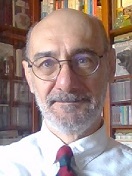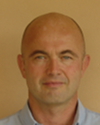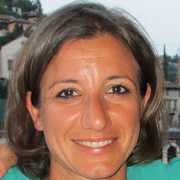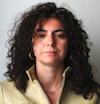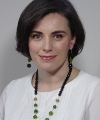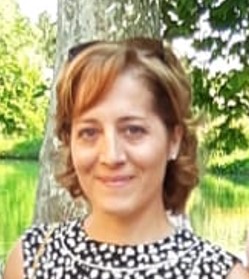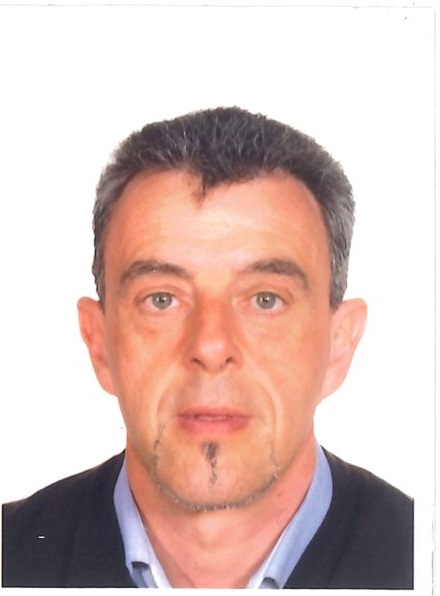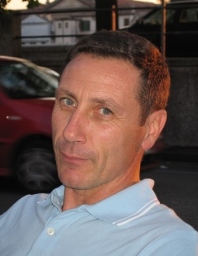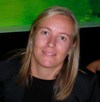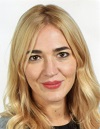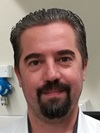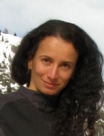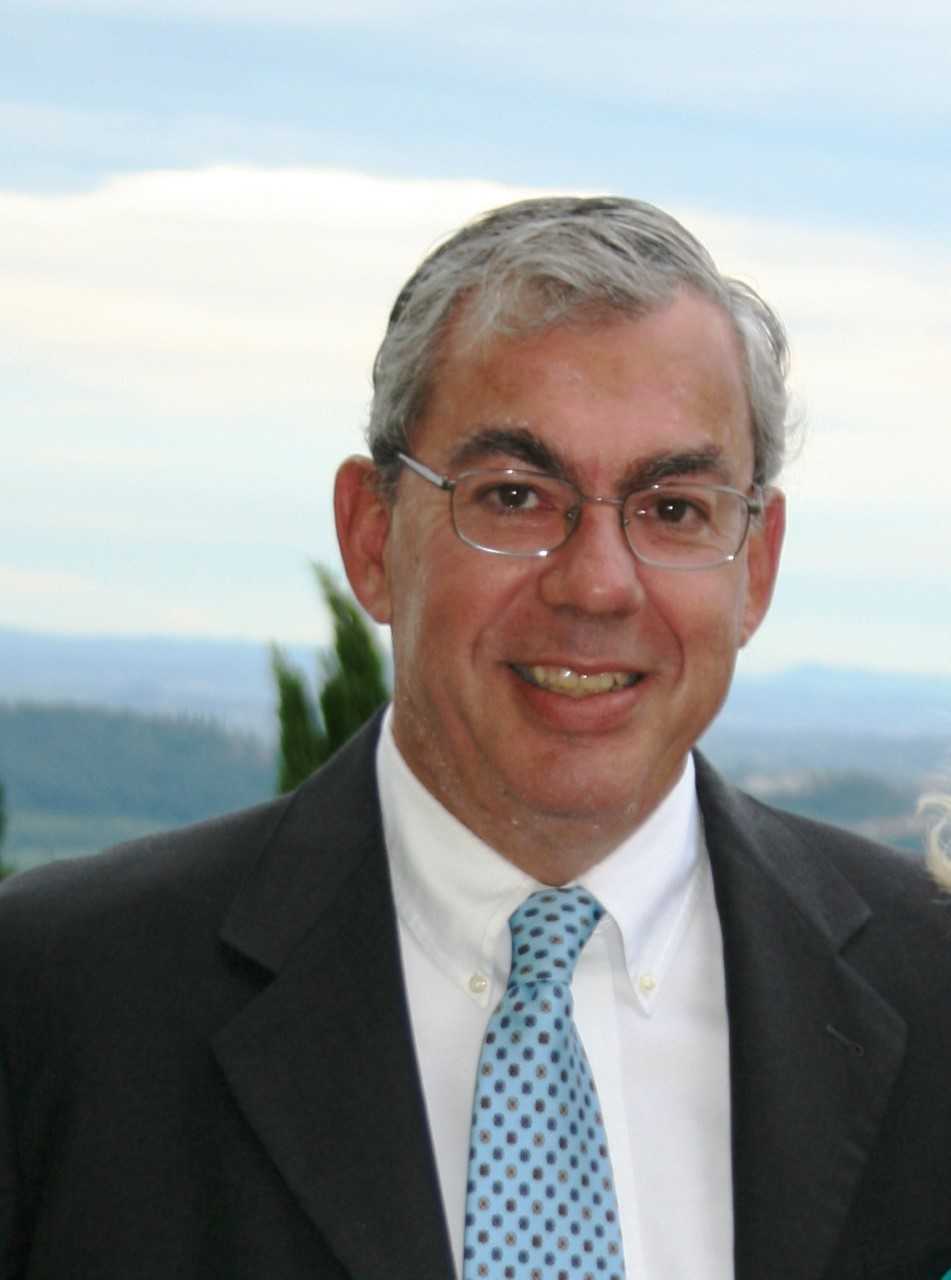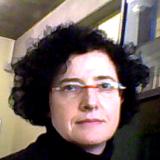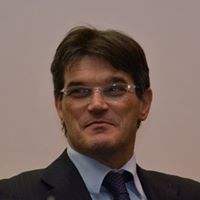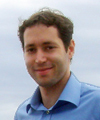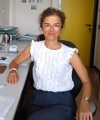Studying at the University of Verona
Here you can find information on the organisational aspects of the Programme, lecture timetables, learning activities and useful contact details for your time at the University, from enrolment to graduation.
Academic calendar
The academic calendar shows the deadlines and scheduled events that are relevant to students, teaching and technical-administrative staff of the University. Public holidays and University closures are also indicated. The academic year normally begins on 1 October each year and ends on 30 September of the following year.
Course calendar
The Academic Calendar sets out the degree programme lecture and exam timetables, as well as the relevant university closure dates..
| Period | From | To |
|---|---|---|
| 1° semestre | Oct 3, 2022 | Jan 20, 2023 |
| 2° semestre | Mar 1, 2023 | May 27, 2023 |
| Session | From | To |
|---|---|---|
| Appelli Sessione invernale | Jan 23, 2023 | Feb 24, 2023 |
| Appelli Sessione estiva | Jun 5, 2023 | Jul 7, 2023 |
| Appelli Sessione autunnale | Aug 28, 2023 | Sep 29, 2023 |
| Appelli Sessione invernale straordinaria | Jan 23, 2024 | Feb 24, 2024 |
| Session | From | To |
|---|---|---|
| Sessione estiva Esame di Laurea | Jul 10, 2023 | Jul 29, 2023 |
| Sessione autunnale Esame di Laurea | Oct 23, 2023 | Nov 20, 2023 |
| Sessione invernale straordinaria Esame di Laurea | Mar 18, 2024 | Apr 19, 2024 |
| Period | From | To |
|---|---|---|
| Vacanze di Natale | Dec 24, 2022 | Jan 1, 2023 |
| Vacanze di Pasqua | Apr 7, 2023 | Apr 10, 2023 |
| Festa della Liberazione | Apr 25, 2023 | Apr 25, 2023 |
| Festa dei Lavoratori | May 1, 2023 | May 1, 2023 |
| Festa della Repubblica | Jun 2, 2023 | Jun 2, 2023 |
| Ognissanti | Nov 1, 2023 | Nov 1, 2023 |
| Festa dell'Immacolata | Dec 8, 2023 | Dec 8, 2023 |
| Description | Period | From | To |
|---|---|---|---|
| Periodo per i tirocini e le esercitazioni | annuale | Oct 3, 2022 | Sep 30, 2023 |
| Description | Period | From | To |
|---|---|---|---|
| Corsi di lingua straniera - consultare calendario CLA | Oct 3, 2022 | Sep 30, 2023 |
Exam calendar
Exam dates and rounds are managed by the relevant Exercise Science Teaching and Student Services Unit.
To view all the exam sessions available, please use the Exam dashboard on ESSE3.
If you forgot your login details or have problems logging in, please contact the relevant IT HelpDesk, or check the login details recovery web page.
Should you have any doubts or questions, please check the Enrollment FAQs
Academic staff
 paola.cesari@univr.it
paola.cesari@univr.it
 rosarita.cuccoli@univr.it
rosarita.cuccoli@univr.it
 lonardifabiola@gmail.com
lonardifabiola@gmail.com
 alberto.nuvolari@gmail.com
alberto.nuvolari@gmail.com
 gilberto.pilati@univr.it
gilberto.pilati@univr.it
 angeloluigi.sangalli@univr.it
angeloluigi.sangalli@univr.it
 fabio.sartori@univr.it
fabio.sartori@univr.it
 stefano-venturi@libero.it
stefano-venturi@libero.it
Study Plan
The Study Plan includes all modules, teaching and learning activities that each student will need to undertake during their time at the University.
Please select your Study Plan based on your enrollment year.
1° Year
| Modules | Credits | TAF | SSD |
|---|
Biochemistry of exercise
Principles of sport management
Introduction to chinesiology and sport
2° Year activated in the A.Y. 2023/2024
| Modules | Credits | TAF | SSD |
|---|
Introduction to movement analysis and motor control
Sport and exercise psychology
Training Methodology
3° Year It will be activated in the A.Y. 2024/2025
| Modules | Credits | TAF | SSD |
|---|
Preventive and adapted physical activity
Pharmacology and cardiology applied to physical activity
Diseases of the Locomotor Apparatus
Teaching individual and team sports
| Modules | Credits | TAF | SSD |
|---|
Biochemistry of exercise
Principles of sport management
Introduction to chinesiology and sport
| Modules | Credits | TAF | SSD |
|---|
Introduction to movement analysis and motor control
Sport and exercise psychology
Training Methodology
| Modules | Credits | TAF | SSD |
|---|
Preventive and adapted physical activity
Pharmacology and cardiology applied to physical activity
Diseases of the Locomotor Apparatus
Teaching individual and team sports
| Modules | Credits | TAF | SSD |
|---|
1 MODULE TO BE CHOSEN BETWEEN THE FOLLOWING1 MODULE TO BE CHOSEN BETWEEN THE FOLLOWINGLegend | Type of training activity (TTA)
TAF (Type of Educational Activity) All courses and activities are classified into different types of educational activities, indicated by a letter.
Biology [Matricole pari] (2022/2023)
Teaching code
4S00303
Teacher
Coordinator
Credits
6
Language
Italian
Scientific Disciplinary Sector (SSD)
BIO/13 - EXPERIMENTAL BIOLOGY
Period
1° semestre dal Oct 3, 2022 al Jan 20, 2023.
Location
VERONA
Learning objectives
The course aims to provide knowledge on cellular structures and functions, cell replication processes, transmission of genetic information, mechanisms of transcription and translation of the genetic information; general and up-to-date knowledge of biological issues that find application in the profession of sports activity experts; knowledge of modern biological investigation techniques that can be used in studies of motor activity and sports. Learning outcomes: understanding of the "scientific method" by describing and interpreting experiments that are part of the history of biology; description of the molecular processes that allow gene expression.
Prerequisites and basic notions
Being an exam of the first year, first semester, there are no specific prerequisites other than those required for access to the degree course.
Program
At the end of the course the student will learn about the following topics:
1. The characteristics common to all living organisms
2. The observations and experiments that led to the discovery of the genetic material: Griffith’s experiments and experiments by Avery, McLeod and McCarty on the identification of DNA; the central dogma of Biology, for which DNA derived from the RNA and protein by RNA; the discovery of the structure of DNA by Erwin Chargaff , Rosalind Franklin, J. Watson and F. Crick and finally to Meselson and Stahl (the semiconservative replication).
3 . The morphological and functional differences between viruses, bacteria and eukaryotes including protists.
4. The biology of the cell: the organization of the eukaryotic cell, the nuclear and cytoplasmic compartments. Microscopy and analytical techniques applied to the cell studies.
4.1 Cell membranes: the bilayer of phospholipids, cholesterol and membrane proteins, the relationship between the antigens on the erythrocyte membrane and blood groups. The transport mechanisms
4.2 The functions of the cell organelles.
4.3 The cell aggregates and the extracellular matrix
4.4 The morphology and function of the epithelial cells
4.5 The morphology of the muscle cell and the nerve cell, the neuromuscular junction and neurotransmitters, synapses, and its organization and the enzymes involved. Depolarization of the membrane, the chain of events that leads to the transmission of the signal from synapse to synapse through the axon, Schwann cells and oligodendrocytes; the action potential and muscle contraction. The muscle cell, molecules, enzymes and proteins involved in the contraction of the muscle fiber. The muscle fiber types and their characteristics, the growth of muscle mass related to training, the function of satellite cells, the function of myostatin and its inhibitors.
4.6 The cells of the connective tissue: diversity and functions
5. The cell reproduction: the cell cycle and the mechanisms that govern cell division (mitosis) and both male and female gametogenesis (meiosis). The stem cells.
6. The flow of gene expression: transcription and translation. The eukaryotic chromosome and gene regulation and expression. Chromatin and chromosomes. The human karyotype. Interpreting the switching on or off of the gene activity in response to an environmental stimulus; interpret the phenomena of differentiation and cell growth through mechanisms such as autocrine, paracrine and endocrine systems. Genetic mutations. The difference between gene mutations and chromosomal abnormalities, spontaneous mutations, mutagens and their action, the test of "fluctuation", the Ames’s test, the correlation between mutagenesis and cancer, the relationship between smoking and cancer, damage to UV and repair mechanisms, the Xerodema Pigmentosum.
7. Inheritance of characters: the principles of Mendelian genetics, the allels and the concepts of dominance and recessiveness.
8. Human genetics: interpreting and building family trees, with particular reference to characters such as the blood groups and some of the known genes in human genetic diseases (eg, familial hypercholesterolemia, cystic fibrosis, hemophilia, etc..)
9. The principles of population genetics population and the Hardy and Weinberg low.
10. The developmental biology: embryonal layers and their fate. The mechanisms involved in the aging; genetics and environmental factors; the Hayflick's experiments; the role of free radicals, antioxidants; the shortening of telomeres; the genetic programs that determine the average life span of a species.
The teaching methods consist of lectures during which the topics covered in the program will be discussed.
The assessment of learning outcomes envisages a written test to ensure knowledge of the topics under consideration.
Bibliography
Didactic methods
The teaching methods consist of classroom lessons during which the topics covered by the program will be addressed and discussed. The teacher will provide videos and power point presentations to supplement the classroom lessons, usable on the moodle platform. For students in isolation due to Covid positivity, registration or streaming will be made accessible on moodle. Students in particular situations of fragility, unable to attend lessons due to disability conditions or particularly disabling learning disorders, will be able to avail of similar support.
Learning assessment procedures
The assessment of the learning outcomes includes a written test aimed at ascertaining the knowledge of the topics in the program. The written test will include multiple choice questions and open-ended questions. To facilitate understanding of the contents and methods of examination, exam questions administered the previous year will be discussed in the classroom with the students of the following year.
Evaluation criteria
The written test potentially covers all the topics listed in the program. It is articulated in 30 questions related to the main themes of the course (life macromolecules, cell biology, cell interactions, genetic information flow, Mendelian inheritance, human genetics). Items are formulated as multiple answer questions and open answer questions. The answer to each item requires knowledge of biological terminology, the ability to interpret genealogy trees, the ability to systematically connect knowledge of biology and genetic molecules, ability to describe and exemplify biological structures.
The evaluation of the written test will be expressed out of thirty and will be considered positive if greater than or equal to 18/30.
Criteria for the composition of the final grade
The evaluation of the written test will be expressed out of thirty and will be considered positive if greater than or equal to 18/30.
Exam language
Italiano
Type D and Type F activities
I Regolamenti dei corsi di laurea e di laurea magistrale di scienze motorie prevedono che gli studenti possano completare il proprio piano didattico, frequentando oltre agli insegnamenti obbligatori anche delle attività formative a scelta, per approfondire alcuni aspetti tematici o settori di interesse, in coerenza con il proprio percorso formativo.
Le attività formative a scelta di ambito D sono indicate all’interno del piano didattico del corso di studio prescelto, mentre le attività formative di ambito F sono individuate da una apposita commissione di docenti. Queste ultime attività possono essere conferenze, seminari, webinar, altro e vengono acquisite con una valutazione e non con un voto in trentesimi.
PERCORSO ELETTIVO
E' possibile personalizzare il proprio piano didattico, selezionando determinate attività a scelta e attivando così un "percorso elettivo" di preferenza tra quelli proposti dal Collegio didattico di Scienze motorie.
Ai link sotto indicati si possono trovare le tabelle con le attività a scelta e i percorsi elettivi disponibili e le indicazioni per l'inserimento delle attività a scelta nel piano didattico da compilare a cura dello studente:
Tabelle delle attività a scelta di tipo C, D, F
Regole per la compilazione del piano didattico con le attività a scelta
COMPETENZE TRASVERSALI
| years | Modules | TAF | Teacher |
|---|---|---|---|
| 3° | Physical bases of exercise prescription | D |
Jan Tom Boone
|
| 3° | Advanced nutrition for sports | D |
Silvia Pogliaghi
(Coordinator)
|
| 3° | Sport physiology | D |
Silvia Pogliaghi
(Coordinator)
|
| years | Modules | TAF | Teacher | |
|---|---|---|---|---|
| 3° | Theory and pedagogy of nordic walking | D |
Barbara Pellegrini
(Coordinator)
|
|
| 2° 3° | Public health applied to exercise | D |
Francesca Moretti
(Coordinator)
|
|
| 2° 3° | Statistics applied to movement sciences | D |
Maria Elisabetta Zanolin
(Coordinator)
|
|
Career prospects
Module/Programme news
News for students
There you will find information, resources and services useful during your time at the University (Student’s exam record, your study plan on ESSE3, Distance Learning courses, university email account, office forms, administrative procedures, etc.). You can log into MyUnivr with your GIA login details: only in this way will you be able to receive notification of all the notices from your teachers and your secretariat via email and soon also via the Univr app.
Graduation
List of theses and work experience proposals
| theses proposals | Research area |
|---|---|
| ANTROPOMETRIA E COMPOSIZIONE CORPOREA NEL CALCIO | Various topics |
| ANTROPOMETRIA TRIDIMENSIONALE - ESEMPI APPLICATIVI | Various topics |
| Controllo posturale e locomozione in età evolutiva | Various topics |
| EFFETTO DELLA VIBRAZIONE CORPOREA TOTALE SU PEDANA | Various topics |
| Feedback Aumentativo e Apprendimento Motorio | Various topics |
| Il ruolo della fatica cognitiva nella prestazione motoria e nella percezione corporea: teorie di riferimento e strumenti di indagine | Various topics |
Gestione carriere
Student mentoring
Orario lezioni
L’orario delle lezioni comprende
Lezioni Frontali in aula
Esercitazioni e laboratori
Questi ultimi sono organizzati per gruppi dai singoli docenti responsabili dei corsi.
L'orario è pubblicato nel portale studenti
Modalità di frequenza
Vige l'obbligo di frequenza al 70% come specificato nel Regolamento di ogni singolo corso di laurea e laurea magistrale:
Ulteriori informazioni:
L'accesso alle pagine Moodle dei singoli insegnamenti è vincolato alla compilazione del piano di studi.
App Univr Lezioni, FAQ e guida all'utilizzo sono disponibili al seguente link: orario-lezioni-e-modalita-di-frequenza
Comunicati: Avvisi per studenti
Internships
Internships are aimed at enabling students to gain direct knowledge of the world of work and to acquire specific professional skills.
Internships are carried out under the responsibility of an individual lecturer, and can be carried out in professional firms, public administration bodies and companies recognised by the University of Verona.
Any CFU credits gained by doing internships will be recognised and recorded by the University in accordance with the relevant University regulations in force (Regolamento d’Ateneo per il riconoscimento dei crediti maturati negli stage universitari).
For further information on internships, please go to: https://www.univr.it/it/i-nostri-servizi/stage-e-tirocini.
Student login and resources
Recupero Obblighi Formativi - OFA
I corsi di supporto per il recupero degli Obblighi Formativi aggiuntivi - OFA di Chimica, Fisica, Matematica - sono organizzati annualmente e sono segnalati direttamente nell'orario delle lezioni del 1° anno ► vedi pagina.
Al termine di ciascun corso frequentato gli studenti dovranno sostenere e superare una prova scritta per colmare il debito entro il 15 dicembre dell'anno successivo, per potersi iscrivere al 2° anno.
►Date e orari degli appelli sono indicati nel Calendario Didattico - Calendario Esami.
In caso di mancato superamento degli obblighi formativi entro il 15/12, lo studente resterà iscritto al 1° anno anche per l'anno successivo come ripetente, dovrà sostenere la verifica di recupero in un altro appello e NON non potrà frequentare o sostenere gli esami del 2° anno.
Certificazione medica di idoneità
Riferimenti normativi principali: DM 24 aprile 2013 art. 3, GU 169 del 20-07-2013; Decreto del Ministro della Salute dell’8 agosto 2014 e s.m.i.
Per frequentare le attività dei corsi di Laurea e Laurea magistrale di Scienze motorie è obbligatorio presentare la certificazione medica di idoneità fisica per attività sportiva non agonistica. La certificazione è necessaria per accedere alle attività pratiche-esercitative e al tirocinio.
à COME OTTENERE LA CERTIFICAZIONE
La certificazione - riportante l’indicazione che è stato eseguito l’ECG a riposo - può essere rilasciata da:
- centri o servizi di medicina dello sport delle ASL (ora ATS) e delle aziende ospedaliere
- istituti della Federazione Medico Sportiva Italiana
- centri pubblici o privati autorizzati:
- dai medici di medicina generale di libera scelta, relativamente ai propri assistiti;
- dal medico specialista in medicina dello sport.
L’ECG a riposo deve essere ripetuto annualmente.
E’ ammesso anche il certificato medico di idoneità alla pratica sportiva agonistica, per chi ne fosse già in possesso.
à SCADENZA PER LA PRESENTAZIONE
La certificazione medica deve essere prodotta al momento dell'immatricolazione e, comunque, entro l’inizio delle lezioni alla Segreteria Corsi di Studio Scienze motorie. Spetta agli studenti rinnovarla annualmente alla scadenza - per ogni anno di iscrizione in corso o fuori corso. La Segreteria effettuerà periodicamente dei controlli sulla consegna dei certificati.
NOTA: Studenti immatricolati a seguito di SUBENTRO/RIPESCAGGIO/TRASFERIMENTO IN INGRESSO: se non è possibile rispettare la scadenza di presentazione del certificato sopra indicata, avvisare la Segreteria Corsi di Studio Scienze, scrivendo all’indirizzo certmed.scienzemotorie@ateneo.univr.it
à MODALITA’ DI CONSEGNA
La certificazione va inviata alla Segreteria Corsi di Studio Scienze motorie dalla propria e-mail istituzionale nome.cognome@studenti.univr.it all’indirizzo certmed.scienzemotorie@ateneo.univr.it.
Esami propedeutici
Alcuni insegnamenti del piano didattico sono definiti "propedeutici", perchè permettono di acquisire le conoscenze necessarie per affrontare lo studio di insegnamenti successivi. Di conseguenza, è obbligatorio superare gli esami degli insegnamenti propedeutici prima di sostenere gli esami di un anno seguente. Le propedeuticità presenti sono indicate di seguito nella tabella:
| Anno | Esami propedeutici | Anno | Esami che richiedono il superamento di propedeuticità | |
| 1 | Biologia | prima di | 2 | Fisiologia |
| Anatomia umana | ||||
| 1 | Biologia | prima di | 2 | Biomeccanica |
| Anatomia umana | ||||
| 1 | Biologia | prima di | 2 | Tecniche e metodologie dell'allenamento |
| Anatomia umana | ||||
| Biochimica del movimento | ||||
| 2 | Fisiologia | |||
| 1 | Biologia | prima di | 3 | Tecniche e didattica degli sport individuali e di squadra |
| Anatomia umana | ||||
| Biochimica del movimento | ||||
| 2 | Fisiologia | |||
| Tecniche e metodologie dell’allenamento | ||||
| 1 | Biologia | prima di | 3 | Attività motorie preventive e adattate |
| Anatomia umana | ||||
| Biochimica del movimento | ||||
| 2 | Fisiologia | |||
| Tecniche e metodologie dell’allenamento | ||||
| 1 | Biologia | prima di | 3 | Malattie dell'apparato locomotore |
| Anatomia umana | ||||
| 2 | Fisiologia | |||
| 1 | Biologia | prima di | 3 | Farmacologia e cardiologia applicate all'attività motoria |
| Anatomia umana | ||||
| 2 | Fisiologia | |||

 0458028142
0458028142

